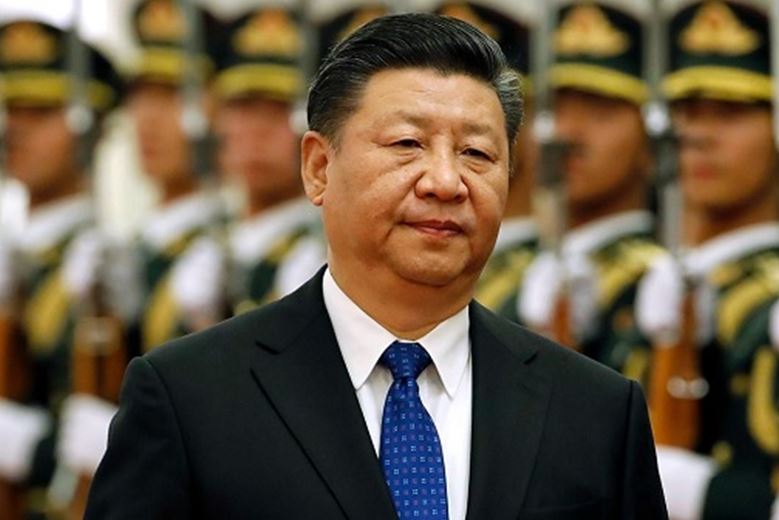As American giants like Facebook, Walmart, and Google invested billions of dollars in India in the last few weeks, Chinese President Xi Jinping promised foreign firms reforms in the Chinese market to create a ‘better’ business environment. In a letter to the Global CEO Council, Xi Jinping said, “[China] will provide a better business environment for Chinese and foreign enterprises [to help them] explore new opportunities and new prospects.” Xi also said, “You’ve made the correct choice of putting down your business roots in China to seek development.”
In the last few weeks, tensions between Washington and Beijing have heightened over a range of issues including the Coronavirus, the imposition of the National Security Law in Hong Kong, human rights violations in Xinjiang, and trade. Both sides threatened sanctions on each other, but Trump, going a step ahead, signed an executive order that gives the Trump administration powers to ban the Communist Party Officials who helped in the implementation of the Security law in Hong Kong.
American businesses are wary of investing in China. Many companies are also moving their manufacturing units out of Chinese cities and withdrawing existing investments. This is a huge concern for Chinese authorities given the dependence of the Chinese economy on exports to the US and investment from American companies. Therefore, Xi Jinping tried to send a message to multinational companies through this letter to Global CEO Council that- China is ready to business with them despite roadblocks created by the American administration.
As per a report by SCMP, “The Global CEO Council, a group of senior executives from 39 big multinational companies, was set up in 2013 by the Chinese People’s Association for Friendship with Foreign Countries, one of Beijing’s diplomatic arms, to improve Beijing’s ties with multinational firms.”
Xi Jinping held a meeting with executives of these companies in June 2018, just a few weeks before the Trump administration started a trade war. From America, UPS, Pfizer, Cargill, Prologis, and Goldman Sachs had executives in the meeting and from Europe, Thales, Alstom, Schneider Electric, ABB, Nokia, Volkswagen, Philips, and ArcelorMittal participated. A few weeks ago, representatives of 18 of these 39 firms wrote a letter to Xi Jinping, praising China’s effort to contain Coronavirus, and now the President has replied with a desperate call for investment in the country.
The mutual back-scratching between Jinping and the 18 executives of the Global CEO council looked like a staged PR event aiming to enhance China’s image as an attractive investment destination amid global backlash.
In the last few months, China has taken many steps to enhance its standing among the global business community. A few days ago, the country posted a miraculous rebound with 3.2 percent GDP growth in the second quarter, at a time when economies around the world shrank.
This clearly looked like an inflated figures, given the fact many factories were operating at reduced capacity or were closed altogether. Derek Scissors, a resident scholar at American Enterprise Institute Washington told SCMP, “It’s very difficult arithmetically to generate [year-on-year] growth when a chunk of firms have gone to zero activity,”
“China didn’t grow in the second quarter,” Scissors concluded, arguing that Beijing published the 3.2 per cent growth figure because “the speed is needed to ensure Xi’s regime meets its targets”.
This is not the first time when China has inflated its growth figures. In fact, a research paper published by Brookings Institution argues that the provincial authorities in China inflated growth figures for nine years. The paper’s analysis covers the period of 2008 to 2016 and it was found that the Communist government inflated the growth figure by 2 percentage points. Therefore the actual size of the Chinese economy could be one-seventh (that is almost 16 percent) smaller than what is being claimed by the National Bureau of Statistics of China.
It is very much evident that the Chinese government wants to attract investment from foreign companies by painting a rosy picture of the Chinese economy through inflated growth figures.
Above this, in order to improve the market sentiments, the Central Bank of China has loosened the monetary policy and pumped billions of dollars through unconventional methods, which led to combined market valuation of Shanghai Stock Exchange and Shenzhen Stock exchange at 9 trillion dollars and analysts are expecting the valuation to touch the historic mark of 10 trillion dollars.
However, the skeptics argue that the stock market is swelling way beyond what it can sustain and can crash soon, just like it did in 2015 after reaching historic high. In 2015, the Chinese stock markets lost 3-4 trillion dollars in just weeks.
These concerted PR efforts- monetary easing to fuel stock markets, stage-managed Global CEO council letter, and inflated growth figures- are all measures by the Communist government to show resilience and attractiveness of Chinese economy, and it is simply not working as American businesses are prioritizing the Indian market with billions of dollars of investment. Vietnam and Taiwan are also gaining majorly. Xi Jinping is thus, desperate.
